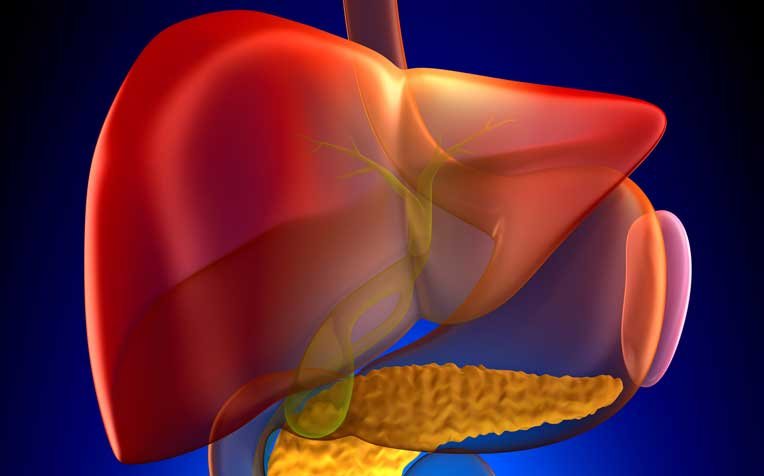LOVE THAT BIGGEST INNER ORGAN OF OUR BODIES-
THE LIVER!
By Adrian Langford
The liver has 250+ functions and breaks down into 3 categories: digestion (produces bile), storage (food, iron, copper, B12) and factory (filters blood from the intestines and removes excess food and iron for storage or for conversion into other substances). It also removes debris, destroys poisons, worn-out blood cells, and alcohol, and manufactures vitamin A and many other chemicals vital to the body.
SYMPTOMS OF LIVER PROBLEMS FROM MAYOCLINIC.ORG
· Abdominal pain and swelling
· Swelling in the legs and ankles
· Itchy skin
· Dark urine color
· Raynaud’s Syndrome
· Gout
· Varicose Veins
· Inflammation
· Insomnia
· Pale stool color, or bloody or tar-colored stool
· Chronic fatigue
· Dark under eye circles
· Nausea or vomiting
· Loss of appetite
· Tendency to bruise easily
It’s a BIG DEAL for BLOOD SUGAR METABOLISM
The hormone, insulin, causes the liver to convert more glucose into glycogen and to force 2/3 of body cells (mostly muscle and fat tissue cells) to take up glucose from the blood and thus decreasing blood sugar.
LOVE YOUR LIVER CAUSE — IT IS A MAJOR FILTERING SYSTEM FOR TOXINS AND IS YOUR BEST FRIEND FOR KEEPING YOU HEALTHY.
Environmental toxins and even rain (it is not as clean as it use to be) put the body’s liver through a lot of work to filter out some serious troublemakers. Some of these troublemakers penetrate the outer one or two layers of the liver. A lot of these toxins penetrate to the liver’s core.
Here’s the list of TOXIC TROUBLEMAKERS –and yes, there are foods, herbs and supplements to help support the liver and help it to detox and regenerate.
Petrochemicals
Plastics, Microplastics, Gasoline, Diesel, Engine oil and grease, Exhaust fumes, Kerosene, Lighter fluid, gas grills, gas stoves & ovens, chemical solvents & agents, dioxins (used in bleaching paper goods, flour, etc.), lacquer, paint, paint thinner, carpet chemicals.
Chemical Neuroantagonists
These toxins are part of an inheritance factor that is passed down from generation to generation and very difficult for people with neurological conditions. The liver releases these more slowly a little at a time so that the body can handle their removal.
Chemical fertilizers, Insecticides, pesticides and herbicides, DDT, Fungicides, Smoke exposure (any), Fluoride, Chlorine.
Food Chemicals and Problem Foods
These tend to leave the liver quickly and with good care to the liver, they can be eliminated from 6 months to a year.
Aspartame and other artificial sweeteners, MSG, Formaldehyde, Preservatives.
FOODS – Eggs (number one food source for viruses and bacteria :^(
Dairy and Cheese – also big pathogen food source, Hormones from foods (processed meats & dairy from those animals), Recreational alcohol, Excessive vinegar use (similar to alcohol; apple cider vinegar is the best of the vinegars – use sparingly), caffeine, excessive salt, gluten, corn, canola oil, pork products (high fat and slows down liver functions causing immune system weakness).
Pathogenic Toxins
This group is a key component of autoimmune diseases. To rid them from the liver one needs to eliminate their fuel sources (all previously listed above). Over time, these pathogens will lesson when their key fuel source(s) are eliminated.
Viruses, viral waste matter (EBV, HHV10,11,12,13,14,15,16), Bacteria (Streptococcus, E. coli, C. difficile, Salmonella – a few of the more known ones), Food-borne toxins (raw fish, meat, poultry, eggs), Mold.
Chemical Indoor Toxins
These are indoor culprits such as second hand smoke (cigarettes, air fresheners) and can detox from the liver within a week of avoidance.
Plug in air fresheners and scented candles, aerosol can air fresheners, spray bottle air fresheners, cologne and after shave, perfumes and scented body lotions, creams, sprays, washes, shampoos, conditioners, gels, and other hair products, hairspray, hair dye, talcum powder, conventional makeup, spray tan, nail chemicals, conventional cleaners, conventional laundry detergent, fabric softener and dryer sheets, dry cleaning chemicals.
Pharmaceuticals
Some pharmaceuticals are life saving and cannot be eliminated. There is lot of over the counter medicines that can be avoided or minimized. Herbs and supplements as well as non-processed foods can support the body and liver when prescriptions are necessary.
Toxic Heavy Metals
These toxins are generational and handed down from generation to generation. There are ones from our past and ones that we are literally born with. Heavy metals are challenging to eliminate from the liver and it’s best to seek a reputable health practitioner for testing and guidance.
Mercury, aluminum, copper, cadmium, barium, nickel and arsenic.
Radiation
The liver is a sponge to radiation. Supplements and seaweeds are often the protocol for pulling radiation out of the liver cells. It can take up to 3+ years to detox radiation fully.
Cell phones, cell phone and computer devices, call towers, x-rays, MRIs, CT scans, food and water, nuclear fallout.
Some Herbs and Foods That Support the Liver
Remember to always consult your health practitioner before starting or doing any food or supplemental regime. Even natural remedies may have an adverse on your body’s system.
Herbs that help support the liver:
Turmeric
Milk Thistle
Dandelion
I use turmeric powder in cooking regularly. Dandelion tea is a great tonic to drink once a day or every other day. Early research on milk thistle suggests that it may aid people with alcohol-related liver disease. Some studies also show milk thistle may offer a possible benefit for people whose liver is damaged by industrial toxins, such as toluene and xylene. Milk thistle like turmeric is an anti-inflammatory and antioxidant. Some foods that benefit the liver are: Citrus, Beetroot, Garlic, and Olive Oil, Green tea, Berries, Avocado, Bananas, Carrots, Lemon and Watermelon and fatty fish (omega 3’s).
See you in the next blog!
In the meantime Cheers to Food and Yoga and being a healthier you!




